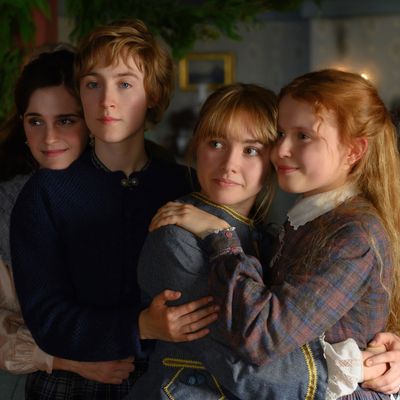
It has come to my attention that some of you [gestures in direction of nearest man] were confused by Greta Gerwig’s Little Women. Don’t be embarrassed! I spoke with several teenage girls after watching the film in theaters this past Christmas, and they, too, had questions. Mostly about Gerwig’s decision to add a meta twist ending, and also, more broadly, about the meaning of ambition and what it means to be a woman in 2020. But I’m sure your questions are valid, too!
Oh, what’s that now — you were confused by Gerwig’s decision to play with the form of the original novel, jumping through time from past, to present, to further past, to the slightly less past, and back to present, to create a new version of the classic tale? Hmm, yes. The teens did not seem to be even remotely confused by that device.
You could, as a certain anonymous Academy voter suggested in his Oscar ballot for The Hollywood Reporter, use Saoirse Ronan’s cropped hair midway through the film to help you figure out where you are in time while watching. (Though Florence Pugh’s bangs make for better and more frequent time stamps.) You could also recognize your implicit biases and grant art made by women the same freedom for innovation and exploration that men have always been granted. You could even skip your veiled critiques and just admit you hate women. Alternatively, I’ve made you this handy guide. [Spoilers ahead, also the Titanic sinks in the end of Titanic.]
When the Women Are Little
When Beth is alive.
When the Women Are Medium-Size
When Beth is alive but coughing more.
When the Women Are Big
When Beth is not alive.
Any questions?

